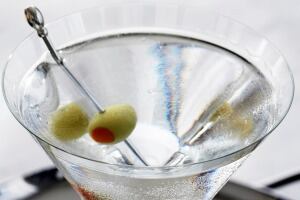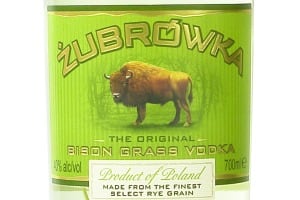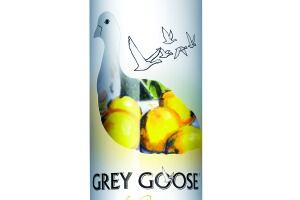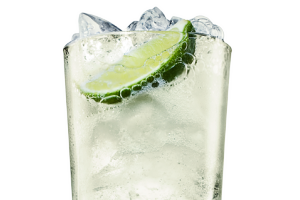Gin’s boutique revival, the Mad Men effect on whiskey, the rise of liqueur shots and serves such as the Jäger-bomb, have all conspired against vodka in recent years.
“While no other category looks to be taking vodka’s crown any time soon, many are chipping away at its dominance,” explains CGA Strategy account manager Alexandra Martin. “Vodka has traditionally been the staple spirit for cocktails, but its grip on this market is wavering as other spirits increase their presence.”
That said, there seems to be plenty of life in the white spirit yet. Vodka has gone upmarket, thanks to a new wave of sophisticated brands with stories to tell.
Couple this with the continued innovation around flavoured variants, and it’s easy to see why vodka is still very much the king of spirits.
The premiumisation of vodka is reflected in the latest on-trade data from CGA Strategy, where the premium vodkas are, in the main, the ones experiencing the most growth.
Best performing of all is Grey Goose, owned by Bacardi Brown-Forman Brands (BBFB). Recently, BBFB embarked on an Iconoclasts of Taste campaign for the brand. The drive was conceived on the lofty premise that a luxury vodka made in France — as opposed to Eastern Europe — “challenges traditional thinking”.

“In the same daring spirit, Iconoclasts of Taste aims to seek out and support emerging iconoclasts that share this desire to break the mould and challenge the status quo,” explains Jon Sampson, premium brands director at BBFB.
As the performance of Grey Goose shows, niche brands with a strong heritage are beginning to cement their place at the premium end of vodka market. Distributor First Drinks says Finnish vodka Reyka, and Zubrówka — a Polish vodka with a flavour derived from bison grass — both meet this criterion.
Top-end outlets have historically represented the biggest opportunity for premium vodka, but as consumers get more discerning, this opportunity is starting to filter down into more mainstream outlets, argues Zubrówka brand manager Hayley Aldous.

Occasions driving the premium vodka market continue to be focused on cocktails, Aldous explains. “Theming these to suit different seasonal occasions such as summer drinking and Christmas can help drive sales. Simple serves such as Zubrówka Tatanka [vodka and apple juice] are easy for bartenders to make, and offer something different to the consumer,” she adds.
Licensees who don’t offer cocktails risk missing out on a significant earner, agrees Ian Peart, on-trade channel director for spirits at Pernod Ricard UK — owner of Swedish vodka Absolut.
With its ‘Drinkologists’ training team, which includes training on effective upselling, Pernod Ricard is helping bars take advantage of the premium opportunity.
The programme aims to provide barstaff with the expertise they need to increase premium spirits sales — advice that can be as simple as ensuring they offer customers the choice of a premium brand by name, or the ‘house’ option when making cocktails.
“Cocktails provide a significant growth opportunity and they do not have to be complicated,” believes Peart. “Furthermore, cocktails are not only the domain of top-end cocktail bars, but they are popular with consumers who venture into pubs and bars — meaning that there is potential for more growth across the wider on-trade.”
"Vodka has been the staple spirit for cocktails, but its grip on this market is wavering"

The opportunity around cocktails has been made easier by the rise of flavoured spirits, which tend to make ideal cocktail bases.
Pernod Ricard has been introducing a raft of flavoured Absolut product extensions in recent years, with fruit-flavoured varieties such as Mango and Citron experiencing the most growth. The company has also just launched Oddka, a range of unusual flavours such as electricity and freshly cut grass.
“The popularity of flavoured vodka lies in its simplicity and diverse flavours, which can be used as a base for creating simple but innovative cocktails,” Peart explains.
Diageo hasn’t been slow in adding flavoured variants of Smirnoff either — most recently with the introduction of Smirnoff Gold this month.
Despite posting volume and value declines, Smirnoff remains by far and away the biggest vodka brand in the UK, and the drinks giant claims flavoured extensions are a “proven category growth driver” for the spirit.
“My advice would be to make sure barstaff are well trained in what mixers go with each flavoured vodka and that staff communicate pairings to people,” says Diageo’s on-trade category manager Andrew Leat.
“Also, create engaging displays on the back bar to engage customers and educate them about the range of flavoured vodkas available. Finally, ensure flavoured vodka cocktails are on the bar menu,” he adds.
Not to be outdone, Whyte & Mackay launched a flavoured range for its Vladivar vodka last year.
And, to appeal to consumers who wish to drink spirits at a more leisurely pace, it cut the ABV of the flavoured range to 20%.
“We have been encouraging consumers to buy a bottle and share it among friends, as we know sociability and sharing are key drivers of purchase,” says Whyte & Mackay UK sales director John Bradbury.
With all this hype around flavoured variants, it can be too easy to overlook the fact there are nuances in taste and flavour between the good-old traditional ‘non-flavoured’ vodkas.
Seemingly conscious of this, Whyte & Mackay has recently invested in an on-trade campaign for Russian Standard. Called Davai (cheers, in Russian), the campaign involves Russian Standard staff visiting bars and asking consumers to think about how they purchase and consume vodka.
“At the moment, vodka is seen as a flavourless spirit that is drunk quickly, but we hope that by educating people on the different processes and taste profiles, we can encourage them to trade up to premium brands,” says Bradbury. “We'd like them to savour vodka in the same way they would a whisky.”
Keen to get consumers talking about vodka, the distributor has brought back the famous Moscow Mule serve. A mix of Russian Standard, ginger beer and lime, the cocktail’s point of difference is that it is served in copper mugs.
“The mugs not only look great, they also help keep the drink chilled,” says Bradbury. “It’s a simple cocktail that barstaff can turn around quickly.”
It seems then, that vodka’s strength is its versatility. And while an elaborate cocktail list will not be viable for all pubs, a number of simple serves will go a long way for most.

What’s new in vodka?
■ First Drinks is currently running a bartender engagement programme called Zubrówka Night Owls. Bartenders around the country have been invited to take part in tastings.
■ Pernod Ricard has launched Oddka, which includes salty caramel popcorn, twist melon and electricity flavours.
■ A cinnamon-flavoured Smirnoff with 23 carat gold leaf called Smirnoff Gold was launched last month.
■ Eliot’s is targeting the student market with the new budget flavoured-vodka collection, Mysthic. Produced in Portugal, the range comprises six flavours.
■ HDW Clix — a new vodka from Hi-Spirits — has been distilled no fewer than 159 times. The ultra-pure vodka is made at the Buffalo Trace Distillery in Kentucky, United States.
